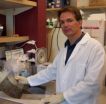(Press-News.org) Pancreatic cancer develops and spreads much more slowly than scientists have thought, according to new research from Johns Hopkins investigators. The finding indicates that there is a potentially broad window for diagnosis and prevention of the disease.
"For the first time, we have a quantifiable estimate of the development of pancreatic cancer, and when it would be best to intervene," according to Christine Iacobuzio-Donahue, M.D., Ph.D., associate professor of pathology and oncology at Hopkins' Sol Goldman Pancreatic Cancer Research Center, "so there is potentially a very broad window for screening." Right now, however, she adds, "pretty much everybody is diagnosed after that window has closed."
Pancreatic cancer is notoriously difficult to detect in its early stages because there are frequently few symptoms and current imaging techniques are not specific for cancer.
Bert Vogelstein, M.D., professor and director of the Ludwig Center for Cancer Genetics & Therapeutics at the Johns Hopkins Kimmel Cancer Center and an investigator at the Howard Hughes Medical Institute, says the results show that "many pancreatic cancer cases have a long lag time before they are detected through conventional tests. This leaves room to develop new early, diagnostic tools and intervene with potentially curative surgery."
The Hopkins work, published in the October 28 issue of the journal Nature, suggests that it takes at least a decade for the first cancer-causing mutation that occurs in a cell in a pancreatic lesion to turn into a full-fledged cancer cell. At this point, the lesion is called "high-grade" and should be removed, much like polyps are removed from the colon.
After the first cancer cell appears, it takes an average of nearly seven years for that cell to turn into the billions that make up a cancerous tumor the size of a plum, after which at least one of the cells within the tumor has the potential and ability to spread to other organs. Patients die an average of two and a half years after this metastasis.
The results contradict the idea that pancreatic cancers metastasize very early in their development, says Iacobuzio-Donahue.
For the study, scientists collected tissue samples during autopsies of seven patients who died from pancreatic cancer that had metastasized to other organs. Because the tissue samples were taken within six hours of each patient's death, the scientists were able to keep some of the cells alive long enough to extract the DNA and sequence the series of chemical "letters" that form genes.
In all patients, metastatic deposits were found in two or more sites in the body, most often the liver, lung and peritoneum (lining of the abdomen). The researchers found similar mutations present in both the areas of metastasis and in the primary pancreatic tumors from which the metastases arose.
They also identified and classified the types of mutations – ones that occur before metastasis and others that happen after the cancer has spread. Both types of mutations were present within the primary tumor years before the metastases became clinically evident, according to Iacobuzio-Donahue.
Using mathematical models to study the timing of pancreatic cancer progression, the scientists conservatively estimated an average of 11.7 years before the first cancer cell develops within a high-grade pancreatic lesion, then an average of 6.8 years as the cancer grows and at least one cell has the potential to spread, and finally, an average of 2.7 years from then until a patient's death.
The Hopkins scientists say the goal is develop a pancreatic cancer screening method similar to the protocol used for breast and colon cancer. Though early stages of pancreatic cancer cause no symptoms, Iacobuzio-Donahue says, perhaps at a certain age people should undergo an endoscopy to screen for pancreatic cancer. Endoscopy is a procedure allowing doctors to look inside the body through the use of an instrument that has a tiny camera attached to a long, thin tube.
Another study published in the same issue of Nature, directed by British researchers at the Wellcome Trust Sanger Institute in collaboration with Iacobuzio-Donahue, used cell lines and tissue samples from the same pancreatic cancer patients as the Johns Hopkins study to look for rearrangements of genetic material. They found more than half of specific rearrangements occurred in all metastases and primary tumors.
INFORMATION:
The genome sequencing work was supported by the National Institutes of Health, the Bill and Melinda Gates Foundation, the Uehara Memorial Foundation, the AACR-Barletta Foundation, the John Templeton Foundation, the Sol Goldman Pancreatic Cancer Research Center, the Michael Rolfe Pancreatic Cancer Foundation, the George Rubis Endowment for Pancreatic Cancer Research, the Joseph C. Monastra Foundation for Pancreatic Cancer Research, the Alfredo Scatena Memorial Fund, Sigma Beta Sorority, the Skip Viragh Foundation, the Virginia and the D.K. Ludwig Fund for Cancer Research, the Joint Program in Mathematical Biology and J. Epstein.
Other scientists involved in the research were Shinichi Yachida, Siân Jones, Rebecca Leary, Baojin Fu, Mihoko Kamiyama, Ralph H. Hruban, James R. Eshleman, Victor E. Velculescu, and Kenneth W. Kinzler of Hopkins; Ivana Bozic and Martin A. Nowak of Harvard University in Cambridge, Mass.; and Tibor Antal of Harvard and the University of Edinburgh, Scotland.
On the Web:
www.nature.com
The Sol Goldman Pancreatic Cancer Research Center: http://pathology.jhu.edu/pc/
Johns Hopkins Kimmel Cancer Center: www.hopkinskimmelcancercenter.org
Researchers at the University of Bristol reveal today in the journal Nature that they have developed a seismological 'speed gun' for the inside of the Earth. Using this technique they will be able to measure the way the Earth's deep interior slowly moves around. This mantle motion is what controls the location of our continents and oceans, and where the tectonic plates collide to shake the surface we live on.
For 2,900 km (1800 miles) beneath our feet, the Earth is made of the rocky mantle. Although solid, it is so hot that it can flow like putty over millions of years. ...
Green tea does not protect against breast cancer. A study of data from approximately 54,000 women, published in BioMed Central's open access journal Breast Cancer Research, found no association between drinking green tea and breast cancer risk.
Motoki Iwasaki, from the National Cancer Center, Tokyo, worked with a team of researchers to carry out the study. He said, "Although in vitro and animal-based studies have suggested that green tea may have beneficial protective effects against breast cancer, results from human studies have been inconclusive. Our large-scale, population-based ...
In new research published today, researchers uncover evolution in action in cancer cells. They show the forces of evolution in pancreatic tumours mean that not only is cancer genetically different between different patients, but each new focus of cancer spread within a patient has acquired distinct mutations.
Effectively, ten different foci of cancer spread are ten different, but related, tumours. The complexity of pancreatic cancer genetics uncovered in this work helps to explain the difficulty of treating the disease but also strengthens the need for improved methods ...
(SALT LAKE CITY)—Just seven months after University of Utah geneticists took part in a landmark study that sequenced for the first time the genome of an entire Utah family, U of U researchers have taken part in another historic study that is the first large-scale genome sequencing project – 179 people representing three continents – and 60 Utahns played a major role in this study, too.
Published Wednesday, Oct. 27, 2010, in Nature, the study demonstrates how quickly the science of genome sequencing is expanding – first from individuals, then to families, and now to large ...
BOSTON--A new oral drug caused dramatic shrinkage of a patient's rare, aggressive form of soft-tissue cancer that was driven by an abnormally activated protein, physician-scientists from Dana-Farber Cancer Institute report in the Oct. 28 issue of the New England Journal of Medicine.
A second patient who had a similar tumor that was not fueled by the mutant protein, called ALK (named for the first disease in which it was found, anaplastic lymphoma kinase), failed to respond to the drug, said the researchers, confirming the inhibitor's specificity for the abnormal protein. ...
Scientists have invented methods to scout the human genome's repetitive landscapes, where DNA sequences are highly identical and heavily duplicated. These advances, as reported today in Science, can identify subtle but important differences among people in the number and content of repeated DNA segments.
These copy number variations partly account for the normal diversity among people. Copy number variations might also be why some people, and not others, have certain disorders or disease susceptibilities, and might also determine how severely they are affected.
Until ...
STANFORD, Calif. — The immune system may play a critical role in ensuring the success of certain types of cancer therapies, according to a new study by researchers at the Stanford University School of Medicine. The research showed treatments that disable cancer-promoting genes called oncogenes are much more successful in eradicating tumors in the presence of a signaling molecule secreted by kind of immune cell called a T helper cell.
The finding is important because many drugs now in use in humans are often tested in lab animals with weakened immune systems and many human ...
PASADENA, Calif.—Five years ago, neuroscientist Christof Koch of the California Institute of Technology (Caltech), neurosurgeon Itzhak Fried of UCLA, and their colleagues discovered that a single neuron in the human brain can function much like a sophisticated computer and recognize people, landmarks, and objects, suggesting that a consistent and explicit code may help transform complex visual representations into long-term and more abstract memories.
Now Koch and Fried, along with former Caltech graduate student and current postdoctoral fellow Moran Cerf, have found ...
Pancreatic tumors are one of the most lethal cancers, with fewer than five percent of patients surviving five years after diagnosis. But a new study that peers deeply into the genetics of pancreatic cancer presents a bit of good news: an opportunity for early diagnosis. In contrast to earlier predictions, many pancreatic tumors are, in fact, slow growing, taking nearly 20 years to become lethal after the first genetic perturbations appear.
"There have been two competing theories explaining why pancreatic cancers are so lethal," says Bert Vogelstein, the Howard Hughes ...
Small genetic differences between individuals help explain why some people have a higher risk than others for developing illnesses such as diabetes or cancer. Today in the journal Nature, the 1000 Genomes Project, an international public-private consortium, published the most comprehensive map of these genetic differences, called variations, estimated to contain approximately 95 percent of the genetic variation of any person on Earth.
Researchers produced the map using next-generation DNA sequencing technologies to systematically characterize human genetic variation ...


